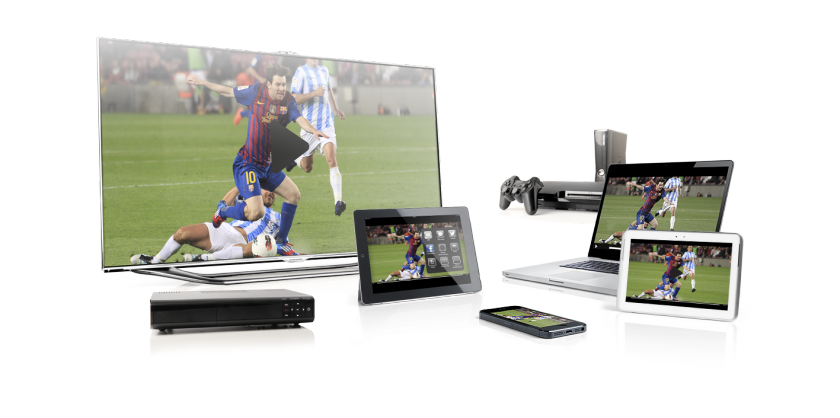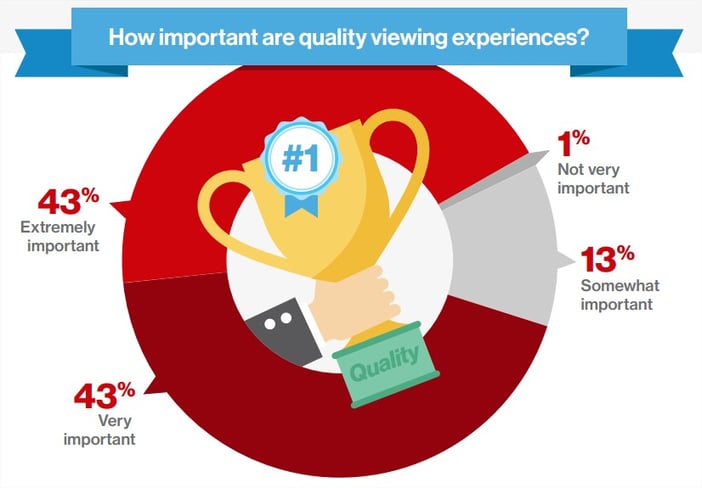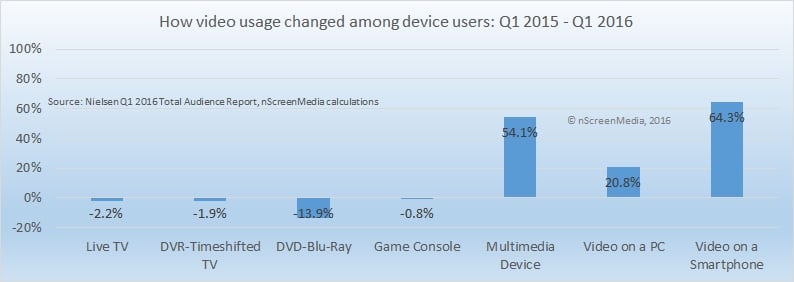 Source: xstream.com
Source: xstream.com
We've said it many times before, but we'll say it again: people in today's world are taking charge of their entertainment viewing destinies and choosing flexibly over clunky TV sets and rigid programme scheduling. Subscription video on demand services have the most significant role in changing viewing patterns.
Not only do SVOD services allow the modern consumer the opportunity to tailor video content to their personal needs, but they also allow people to enjoy said content on a multitude of devices.
Streaming video is watched on many devices, but quality requirements stay the same
Now, according to a recent study carried out by Verizon Digital Media Services, 34 percent of streaming (weekly) happens on connected TV, 39 percent on TV, 23 percent on mobile, while 14 percent goes to tablets.
Their survey shows that quality matters. As the number of SVOD subscribers rises, so does the demand for a smoother user experience - people don't just want flexibility; they also want their services to offer flawless viewing.
In fact, 86 percent of viewers say it is incredibly important to get a TV-like quality experience every time they watch content, and on every screen they use.
 Source: Verizon Digital Media
Source: Verizon Digital Media
So when you think about it, the rise in people streaming content from a mobile device, means that tackling video quality issues, buffer rates and user interfaces across a range of mediums as never been so important.
TV delivery changes shape
Another interesting insight comes from Nielsen. It seems that SVOD has reached a significant milestone in its development and in terms of popularity, it is now on par with DVR - for the first time ever. In fact, half of all homes in the United States have access to SVOD services including Netflix or Hulu; therefore, equaling U.S. DVR penetration.
This shift in viewing attitude is brilliantly summed up in this recent tweet by Colin Dixon from nScreenMedia:
Live TV viewing down 2.2%, streaming media player usage up 54%. Viewing stays on TV, just moves delivery medium! https://t.co/XvHMMnozVT
— Colin Dixon (@nScreenMedia) June 28, 2016
What does this all mean? The rise in streaming and the fall in traditional TV viewership indicates that the playing field has changed drastically in recent times. Video use on smartphones increased 64% this year alone and as a result content delivery methods are changing shape: today's consumers (particularly the youth) want to be interconnected, and enjoy on the go forms of viewing entertainment. To keep up with the times, content providers will have to work extra-hard to develop strategies and systems to meet the needs of this rapidly evolving market.

These days, you don't have to be in the same country as someone to enjoy their company, you don't have to be chained to a desk to make a living, and you certainly don't have to sit on a sofa while flicking through the TV guide to enjoy your evening entertainment.
We are all connected, and as technology evolves faster and faster, the demise of traditional TV may come sooner than we think.
Learn how MoviePigs merged SVOD and social media to please their fans:



